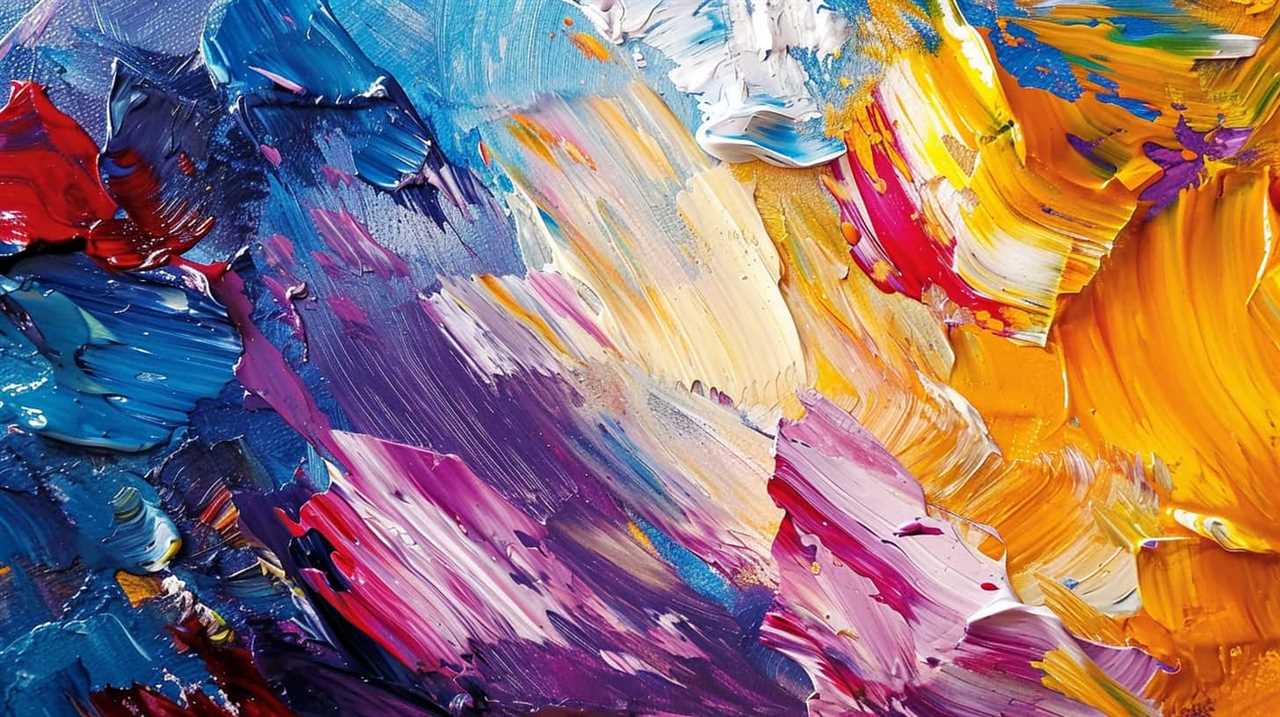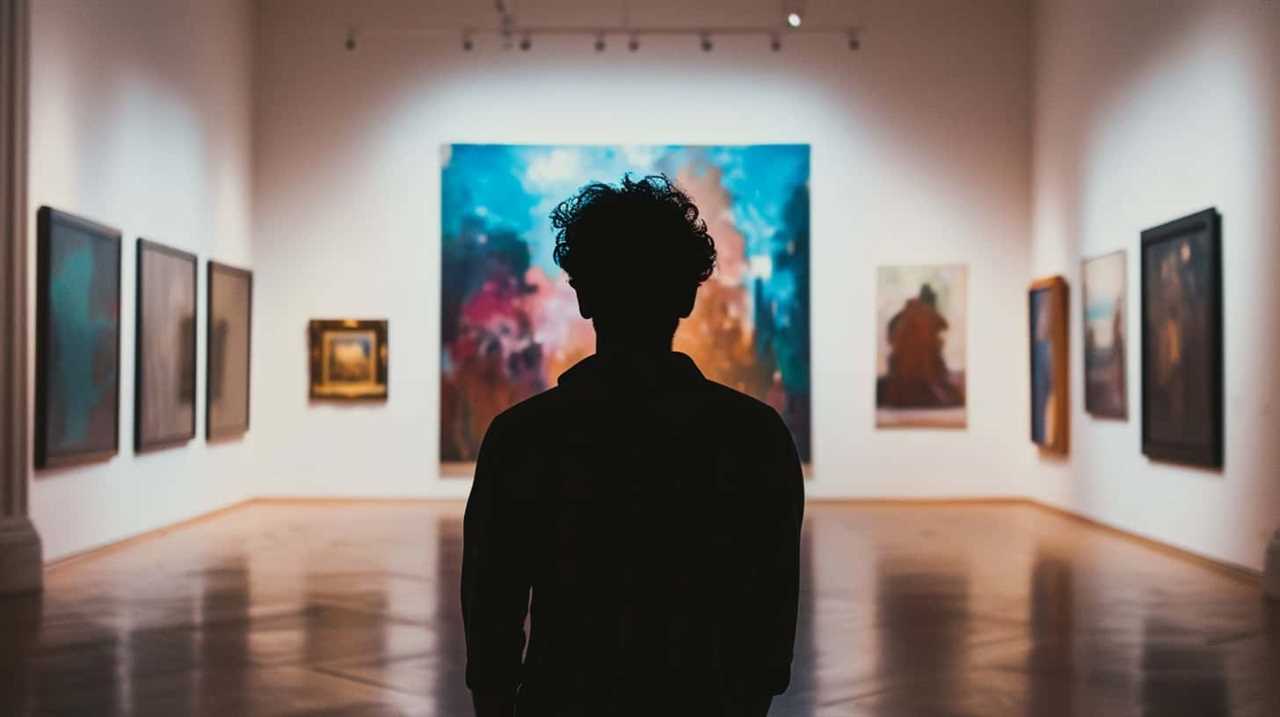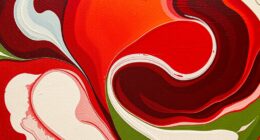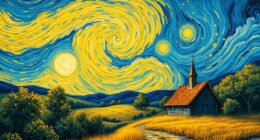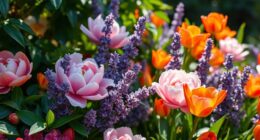They say that a master painter’s brush strokes can speak volumes. In our quest for mastery, we have explored and compiled the six best painting techniques that have captivated the art world throughout history.
From the impasto technique, which uses thick layers of paint to create texture, to the dramatic use of light and shadow in tenebrism, these techniques hold the power to elevate our paintings to new heights.
But it’s not just the techniques that inspire us; the wisdom of famous artists also serves as a guiding light. In this article, we will not only unravel the secrets of these techniques, but we will also delve into the profound quotes that renowned artists have shared about their craft.
So let’s pick up our brushes and embark on this journey of artistic exploration together.
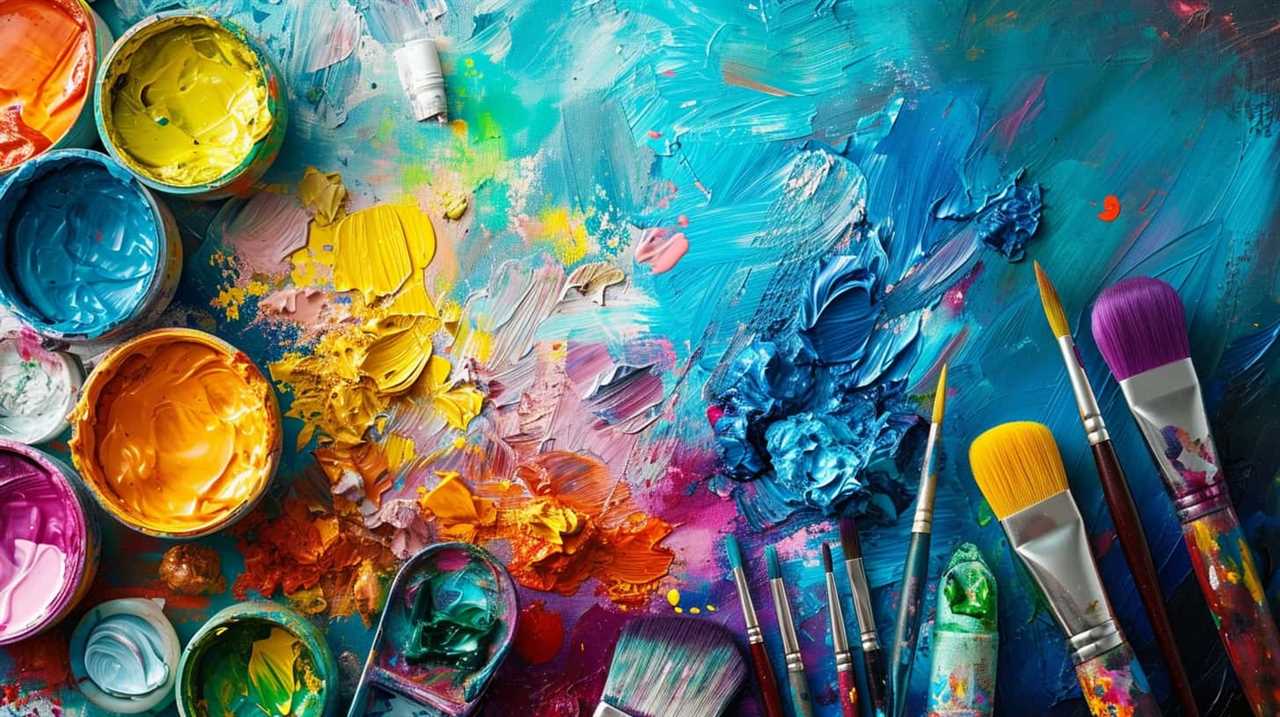
Key Takeaways
- Impasto technique allows artists to create texture and convey depth and movement in their paintings.
- Glazing technique enhances visual dimension and achieves luminous color by layering translucent colors.
- Wet-on-wet technique is a popular blending technique that creates smooth and harmonious blends between colors.
- Sfumato technique creates soft and hazy transitions between colors and adds depth and mystery to the painting.
- Chiaroscuro technique emphasizes the contrast between light and dark, creating a dramatic and three-dimensional effect.
Impasto: Thick Layers of Paint for Texture
Impasto, which is achieved by applying thick layers of paint to create texture, is a technique that we artists love to use. Creating textured effects through impasto allows us to convey depth and dimension in our paintings. By building up layers of paint, we can manipulate light and shadow, adding a tactile quality to our work.
Many famous artists are known for their masterful use of impasto techniques. One such artist is Vincent van Gogh, whose thick, expressive brushstrokes created a sense of movement and energy in his paintings. His iconic works, such as ‘Starry Night,’ are characterized by the bold, textured application of paint. Another artist renowned for his use of impasto is Rembrandt van Rijn. His portraits, such as ‘Self-Portrait with Two Circles,’ showcase his ability to create lifelike textures and capture the essence of his subjects.
Using impasto allows us to not only add visual interest to our paintings but also to evoke emotions and engage the viewer on a deeper level. The tactile quality of impasto invites the viewer to experience the painting through touch, making it a truly immersive experience.
As artists, we continue to explore and experiment with impasto techniques, pushing the boundaries of texture and creating unique and captivating works of art.
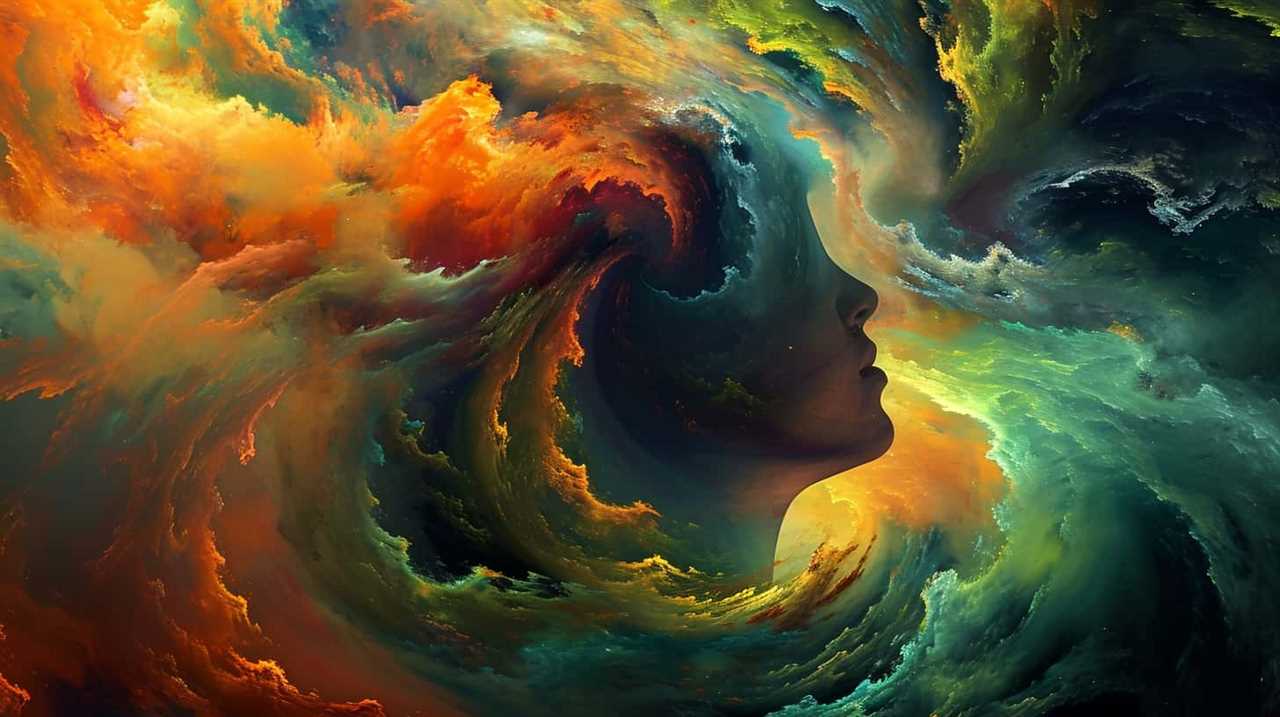
Glazing: Layering Translucent Colors for Depth
When it comes to painting techniques, glazing is a powerful tool for enhancing visual dimension and achieving luminous color. By layering translucent colors on top of each other, artists create depth and richness in their paintings.
The process involves applying thin layers of paint, allowing each layer to dry before adding the next, resulting in a stunning effect that captures light and adds a sense of luminosity to the artwork.
Enhancing Visual Dimension
We love enhancing the visual dimension of our paintings by utilizing the technique of glazing, which involves layering translucent colors to create depth. Glazing is a powerful tool for artists to explore color theory and create illusions of depth and space. By layering thin, translucent coats of paint over a dried base layer, we can achieve a remarkable level of depth and luminosity in our artworks. This technique allows us to build up layers of color, creating a sense of depth and dimension that is hard to achieve with a single layer of opaque paint. The layering of translucent colors adds richness and complexity to our paintings, making them visually captivating and engaging. Through the careful application of glazes, we can create a visual experience that draws the viewer in and invites them to explore the depths of our work.
| Color Theory | Creating Illusions | Enhancing Visual Dimension |
|---|---|---|
| Understanding the relationships between colors and how they interact with each other is essential for creating harmonious and visually appealing artworks. | Utilizing techniques such as glazing can create illusions of depth, space, and texture in a flat surface. | Glazing is a powerful tool for artists to enhance the visual dimension of their artworks, adding depth, complexity, and luminosity to their paintings. |
Achieving Luminous Color
To achieve luminous color in our paintings, we further explore the technique of glazing by layering translucent colors for added depth and dimension. Glazing allows us to achieve harmony and richness in our color palette, enhancing the visual impact of our artwork. By applying thin layers of translucent paint over previously dried layers, we can create a luminous effect that’s impossible to achieve with opaque colors alone.

Color theory plays a crucial role in glazing. Understanding the interaction of colors and their optical properties allows us to strategically layer translucent colors to achieve the desired effect. For example, by layering a warm glaze over a cool base color, we can create a sense of depth and warmth. Conversely, layering a cool glaze over a warm base color can create a sense of coolness and distance.
Experimentation and observation are key to mastering the art of glazing and achieving luminous color in our paintings.
Wet-On-Wet: Blending Wet Paint for Seamless Transitions
How can wet-on-wet painting techniques be used to achieve seamless transitions between colors?
Wet-on-wet is a popular blending technique used by many artists to create smooth and seamless transitions between colors. By applying wet paint onto wet paint, artists can achieve a beautiful and harmonious blend of colors.

Here are three key ways wet-on-wet painting can be utilized to achieve seamless transitions:
- Blending with a brush: Using a soft brush, artists can gently blend two or more colors together on the canvas, creating a gradual transition from one color to another. This technique allows for precise control over the blending process, resulting in a seamless and natural effect.
- Layering thin washes: By layering thin washes of different colors on top of each other while the paint is still wet, artists can achieve a soft and gradual transition between the colors. This technique works particularly well for creating atmospheric effects or adding depth to a painting.
- Wet-on-wet glazing: Glazing involves applying a transparent layer of color over an existing layer of wet paint. By glazing wet-on-wet, artists can create subtle transitions and add depth to their artwork. This technique is often used to enhance realism and create a sense of luminosity in a painting.
Famous artist quotes on blending techniques:
- ‘Colors blend naturally when applied wet-on-wet. It’s like a dance where each color gracefully merges with the next.’ – Claude Monet
- ‘Wet-on-wet painting allows for seamless transitions between colors, giving life and movement to your artwork.’ – Georgia O’Keeffe
- ‘The magic of wet-on-wet lies in its ability to create a seamless flow of colors, capturing the essence of the subject and the artist’s vision.’ – Bob Ross
Dry Brush: Adding Texture With Minimal Paint
To create texture with minimal paint, we can utilize the dry brush technique, which involves using a small amount of paint on a dry brush to add varied and textured brushstrokes. This technique is highly effective in adding texture to paintings, as it allows for controlled application of paint and creates interesting visual effects.
Dry brush techniques are commonly used by artists to achieve a rough and textured appearance in their artwork. By using a dry brush with minimal paint, artists can create a broken and uneven stroke that adds depth and dimension to their paintings. The technique is particularly useful when trying to depict rough surfaces, such as tree barks, rocks, or fur.
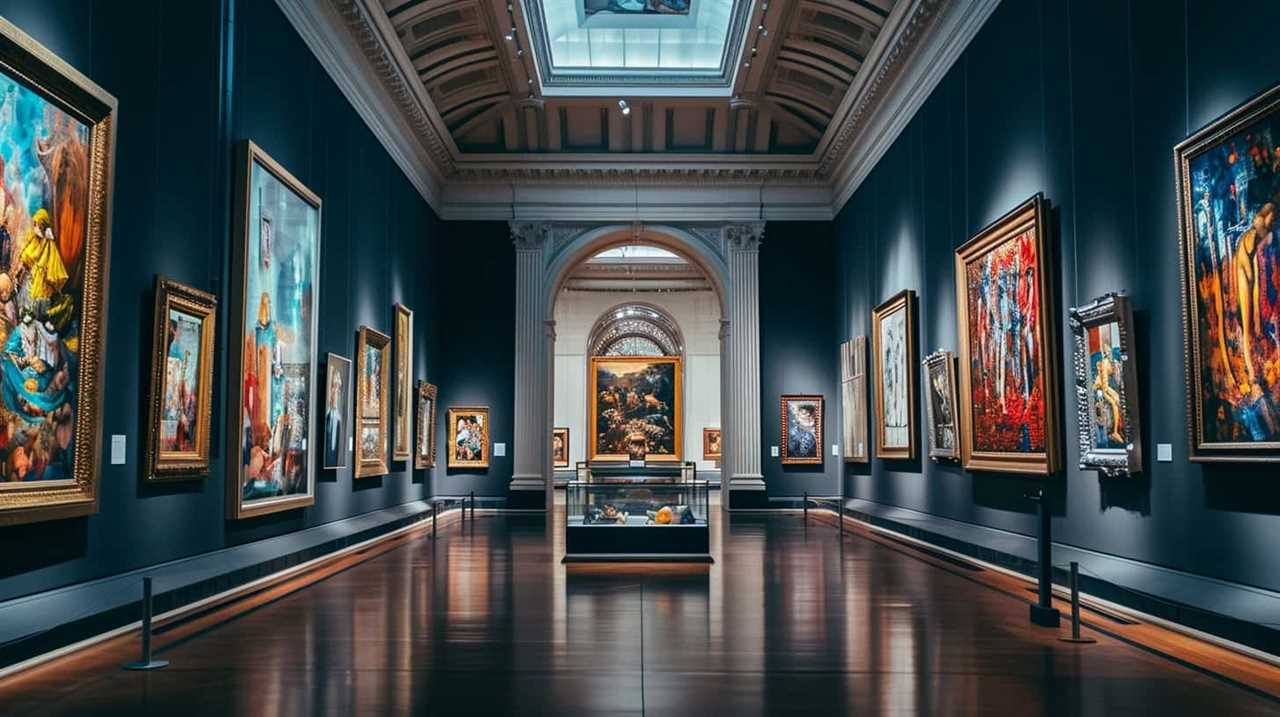
When using the dry brush technique, it’s important to have a firm and dry brush, as this allows for better control over the application of paint. The artist can then lightly drag the brush over the surface, creating a series of broken and uneven lines that simulate texture.
Adding texture through dry brush techniques can greatly enhance the overall visual impact of a painting. It adds interest and complexity to the artwork, making it more engaging for the viewer. By mastering this technique, artists can elevate their paintings to a new level of mastery and create stunning visual effects with minimal paint.
Sgraffito: Scratching Through Layers for Intricate Details
We love using the sgraffito technique because it allows us to scratch through layers of paint to create intricate details. This technique involves applying multiple layers of paint and then selectively removing certain areas to reveal the colors beneath, resulting in stunning and intricate patterns. Sgraffito is a highly versatile technique that can be used to create a wide range of effects and textures, adding depth and visual interest to a painting.
Here are three key reasons why sgraffito is such a valuable technique for artists:
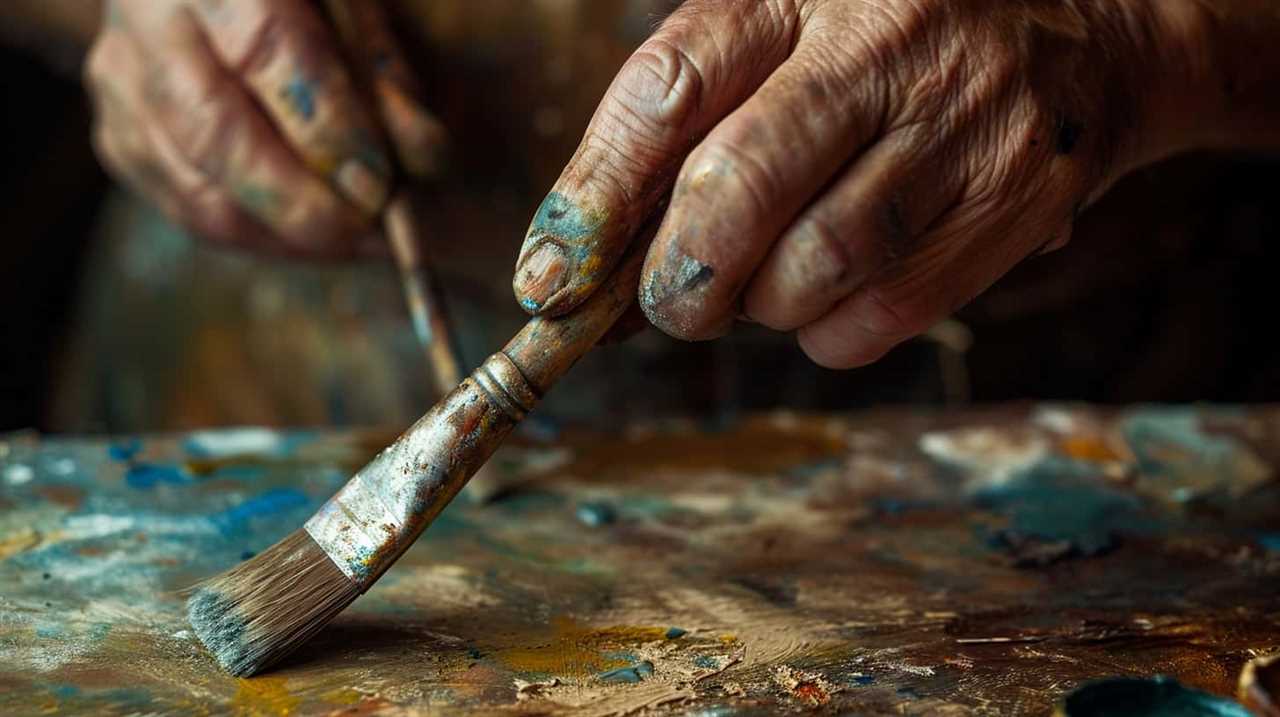
- Enhancing depth: By layering different colors of paint and then scratching through them, artists can create a sense of depth and dimension in their work. The contrasting colors peeking through the scratched areas add visual complexity and richness to the painting.
- Adding texture: Sgraffito allows artists to incorporate texture into their artwork. By selectively scratching through the paint, they can create a variety of surface effects, from fine lines to bold grooves. This adds tactile interest and can evoke different emotions and moods in the viewer.
- Expressing intricate details: The ability to scratch through layers of paint provides a level of control and precision that’s essential for capturing intricate details. Whether it’s delicate patterns or fine lines, sgraffito allows artists to achieve a level of intricacy that may be challenging with other techniques.
Tenebrism: Dramatic Use of Light and Shadow
Continuing from our exploration of the sgraffito technique, we now delve into the captivating world of tenebrism, using dramatic light and shadow to evoke powerful emotions in our paintings.
Tenebrism, derived from the Italian word ‘tenebroso’ meaning dark, is a painting technique that emerged during the Baroque period and was championed by artists such as Caravaggio.
Tenebrism is characterized by its symbolic depiction of light and shadow, with stark contrasts between illuminated areas and deep shadows. This technique creates a sense of drama, intensity, and mystery in the artwork, allowing the artist to convey complex emotions to the viewer. By manipulating light and shadow, artists can emphasize certain elements of the composition, intensify the emotional impact, and direct the viewer’s attention to key focal points.
The emotional impact of contrasting tones in tenebrist paintings is undeniable. The stark juxtaposition of light and shadow creates a heightened sense of tension and captures the viewer’s attention. The deep shadows can evoke a sense of foreboding or mystery, while the illuminated areas can convey hope, clarity, or even divine presence. This interplay of light and dark not only adds depth and dimension to the artwork but also evokes a visceral response from the viewer.

Mastering tenebrism requires a keen understanding of light and shadow, as well as the ability to manipulate these elements to create a desired emotional impact. By skillfully using contrasting tones, artists can elicit strong emotions and create captivating and evocative paintings that resonate with the viewer.
Frequently Asked Questions
Can I Achieve a Textured Effect With Thin Layers of Paint Instead of Using Impasto Technique?
Yes, achieving a textured effect with thin layers of paint is possible. By layering translucent colors and using various brush techniques, we can create depth and texture without relying on the impasto technique.
How Can I Prevent My Glazing Layers From Becoming Muddy or Opaque?
How can we prevent our glazing layers from becoming muddy or opaque? By using thin, transparent layers of paint and ensuring each layer is completely dry before applying the next, we can achieve smooth, luminous glazing effects.
Are There Any Specific Paint Brands or Types That Work Best for Wet-On-Wet Blending?
We recommend using high-quality paint brands like Winsor & Newton or Gamblin for wet-on-wet blending. These brands offer a wide range of colors and have excellent pigment load, allowing for smooth blending and vibrant results.
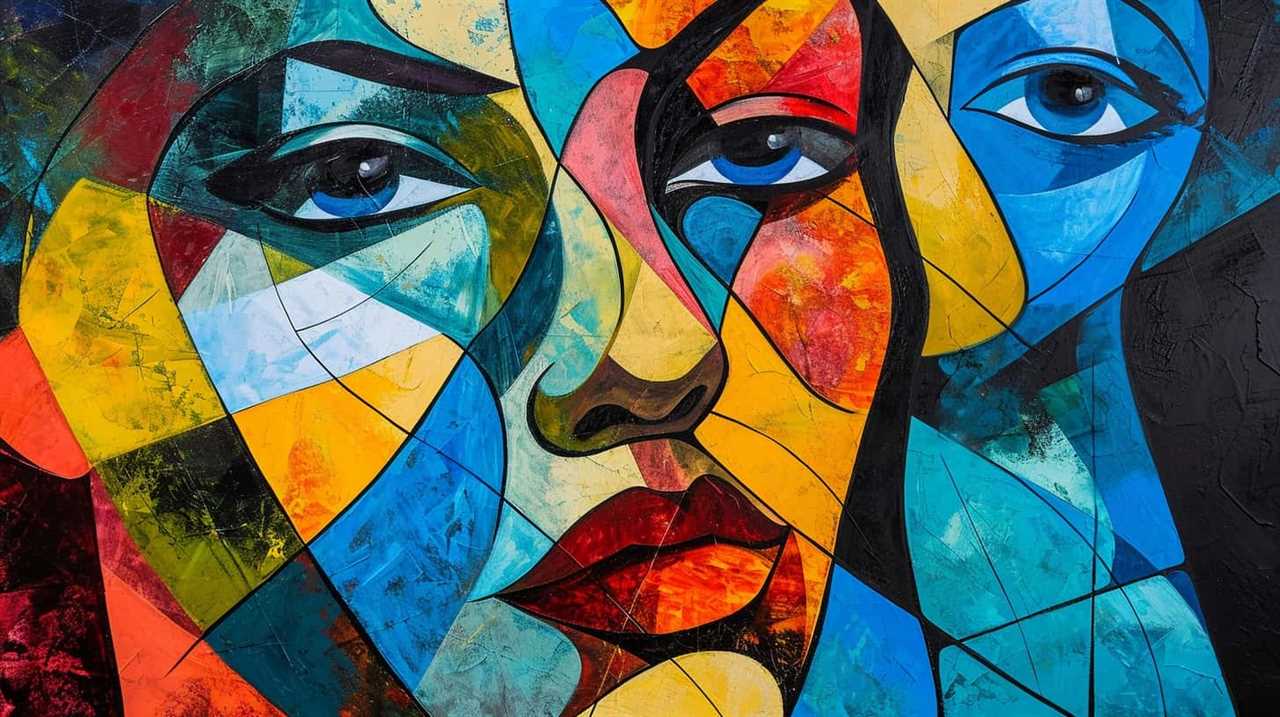
Can Dry Brushing Be Used to Create Smooth, Even Surfaces as Well, or Is It Only for Adding Texture?
Yes, dry brushing can be used to create smooth surfaces by applying thin layers of paint. While it is commonly used for adding texture, with the right technique and brush, it can also achieve a polished and even effect.
What Tools or Techniques Can I Use to Create Detailed Sgraffito Effects Without Damaging the Underlying Layers of Paint?
We can create intricate designs using various tools and blending techniques, ensuring the layers of paint remain intact. By employing careful application and precise scraping, we achieve a seamless finish while preserving the integrity of the underlying layers.
How Do Painting Techniques Influence Cultural Shifts According to Famous Artists?
Famous artists influencing culture can be seen through quotes from artists influencing culture. Painting techniques often reflect and shape societal values, traditions, and beliefs. From Monet’s impressionistic style to Warhol’s pop art, art has been a mirror of cultural shifts, challenging norms and perceptions.
Conclusion
In conclusion, exploring different painting techniques can add depth, texture, and intrigue to your artwork. From the thick layers of impasto to the delicate layering of glazing, each method offers a unique way to express your creativity.
As famous artists have said, ‘The purpose of art is washing the dust of daily life off our souls’ (Pablo Picasso) and ‘Every artist was first an amateur’ (Ralph Waldo Emerson).

So, embrace these techniques, experiment with them, and let your imagination soar on the canvas.
Lauren’s talent in writing is matched by her passion for storytelling. Her love for books and deep understanding of culture and entertainment add a distinct flavor to her work. As our media and press contact, Lauren skillfully bridges the gap between afterQuotes and the broader media landscape, bringing our message to a wider audience.

